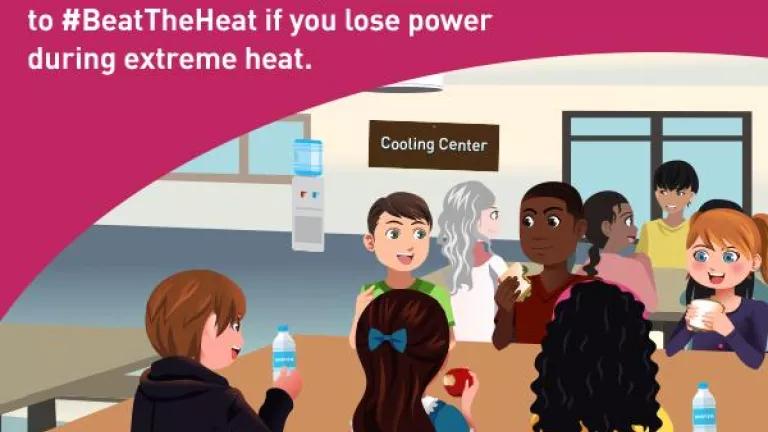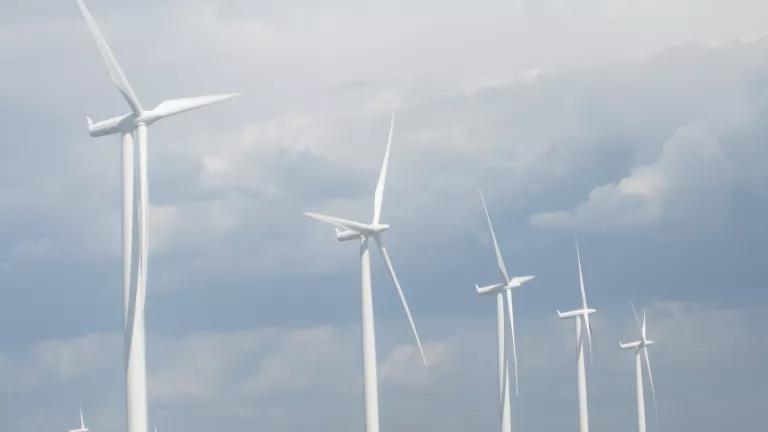Hot Talk in 2018’s Climate Summer

It is hot out there, people! Not your normal “of course, it’s summer” hot, but hot enough to cause deadly heat waves, break records around the globe, and even wreck critical infrastructure like water mains.
This is the kind of summer climate scientists have warned us about for decades. And things will only get worse if we keep filling the air with vast amounts of climate-changing pollution.
It’s fitting, then, that I had the opportunity to appear on the inaugural episode of a Maryland-based Takoma Radio series called “Climate Summer.” Julie Hantman led David Arkush from Public Citizen, Kelly Nichols from Moms Clean Air Force, and me through a discussion about the health harms of extreme heat, and what we can do to protect ourselves.
Here are some of the points that stuck with me from the 60-minute program:
Point #1: Heat illnesses and deaths are preventable.
Heat can make anyone sick—but it doesn’t have to. For example, heat particularly threatens the health of outdoor workers. Some countries, like Bahrain, forbid outdoor labor in the middle of the day because of the potential for heat-related illnesses and deaths. But here in the United States, employers don’t sufficiently protect workers from extreme heat. America can do better than that, which is why NRDC recently joined Public Citizen and more than 130 other groups to call for a federal heat standard to protect workers.
We also talked about the elevated threat of heat to other groups, like small children, people living in poverty, and people with chronic illnesses. A 2016 analysis of D.C. neighborhoods, for example, found that Wards 7 and 8 were the most heat-vulnerable parts of the city because of high unemployment and a high prevalence of poverty, obesity, and asthma. Local and state health departments must pay close attention to vulnerable groups as they develop plans to deal with the health impacts of climate change.
Of course, we all need to take personal precautions as well. Check out these heat safety tips for ways to keep yourselves safe when heat waves hit your area.
Point #2: Climate change is preventable, too.
We’ve known for more than 150 years that emissions from burning coal, oil, and natural gas trap heat and make our climate hotter. We just haven’t been great about turning that knowledge into action.
That’s starting to change. For one thing, business leaders and elected officials all across the country are deeply committed to climate action even as the Trump administration tries to turn the clock back on recent progress.
As David pointed out, however, we’ll need a “big, strong movement of a lot of people demanding change” to decisively move to a cleaner climate future.
Which brings us to …
Point #3: You’re not the only climate hero (or hero-in-training) out there.
Kelly talked a couple of times about the power of connecting people who care deeply about creating a safer, healthier world. She’s seen how events like the Play-in For Climate Action can help people realize that they don’t have to sit alone at home, fretting about climate change in isolation. And you don’t have to be a fancy-pants technical expert to be a climate hero. As Kelly said, “People who continually bang the drum for climate action are ... my climate heroes."
So, be a climate hero. Complete an online action, talk about climate change with your family and friends, attend a march—whatever you can do to push our leaders in government to side with clean energy and climate safety over dirty energy and a hotter, more dangerous future.
Hungry to hear more from “Climate Summer”? Visit the Climate Summer website and tune into Takoma Radio at 3 pm EST on August 13 for a conversation about flooding in D.C. and Maryland.



